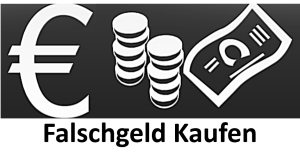Natalia Bayles
High-Quality Fakes: The Intricacies of Authenticity in the Modern Marketplace
In a period defined by quick globalization, online shopping, and the democratization of high-end, the emergence of high-quality fakes has become a substantial phenomenon. As consumers progressively look for status signs at available prices, counterfeit items-- especially those crafted with extraordinary skill-- have acquired traction. This article delves into the world of high-quality fakes, exploring their implications, the markets most impacted, and the ethical considerations they raise.
Understanding High-Quality Fakes
High-quality fakes describe counterfeit products that are created to carefully mimic the appearance, performance, and even branding of genuine high-end items. Unlike lower-quality knockoffs that are often defined by their obvious flaws, high-quality fakes can be so convincingly produced that they may easily pass as genuine to the untrained eye.
Characteristics of High-Quality Fakes:Material Quality: These fakes often use materials that carefully look like or duplicate those used in genuine products, making them visually appealing and hard to differentiate from originals.Workmanship: Skilled craftsmens may craft these products with precision, focusing on the information that set the designer items apart from below average copies.Minimal Editions: Some counterfeiters exploit the attraction of limited editions, producing fakes in small quantities to boost their desirability.Branding Techniques: High-quality fakes are frequently branded using innovative strategies, leading consumers to believe they are purchasing authentic product.The Industries Most Affected
The marketplace for high-quality fakes is not limited to any particular sector; however, a couple of industries are particularly vulnerable:
Luxury Fashion: Throughout the years, high-end style brand names have faced a barrage of counterfeiting, from bags to shoes and apparel. With consumers increasingly budgets in mind, high-quality fakes are appealing options to authentic products.
Precious jewelry: Counterfeit fashion jewelry, especially reproductions of renowned pieces from popular houses, can be almost identical from the real thing. These fakes present obstacles for consumers who may struggle to determine the distinction.
Customer Electronics: With the constant improvement of innovation, fake versions of popular gizmos, especially smartphones, have appeared. These devices often feature similar designs but may compromise on quality or efficiency.
Art and Collectibles: The art market faces significant concerns with forgeries, bester falschgeld anbieter; Www.margarettebecera.top, with some fakes gathering high rates despite lacking authenticity. Collectors frequently challenge predicaments relating to the provenance of their pieces.
The Impact on Consumers and Brands
While the allure of high-quality fakes might be irresistible to some customers, it's important to consider the implications of buying such products.
Pros for Consumers:Affordability: High-quality fakes offer a more affordable alternative for customers who wish to take pleasure in luxury items without paying premium prices.Fashionable Options: Counterfeit products frequently simulate the most recent trends, permitting consumers to stay stylish without substantial monetary investment.Cons for Consumers:Lack of Authenticity: Purchasing a high-quality fake might cause feelings of guilt or deception, particularly for customers who value brand integrity.Quality Risks: While some fakes are high quality, others may not fulfill security standards or provide the resilience associated with genuine products.Effect on Brands:Profit Loss: Luxury brands experience considerable revenue losses due to counterfeit products undercutting their market share.Brand name Equity: The proliferation of high-quality fakes can dilute a brand name's value and contributions to its special identity within the market.Browsing the Terrain: How to Spot High-Quality Fakes
For customers interested in acquiring authentic products, being able to identify high-quality fakes is essential. Here are some pointers:
Research the Brand: Familiarize yourself with the brand, its worths, and its design elements. Knowledgeable consumers are less most likely to succumb to counterfeit products.
Inspect Materials: Authentic high-end products typically utilize premium products. If something feels off, it may not be authentic.
Inspect for Certification: Reputable brand names frequently provide accreditations or authenticity cards with their items. These can be handy in validating an item's legitimacy.
Buy From Trusted Sources: Stick to authorized sellers or official websites to decrease the risk of acquiring a high-quality fake.
Take Note of Pricing: If the offer seems too good to be true, it most likely is. Watch out for rates significantly lower than those of verified merchants.
Ethical Considerations
The increase of high-quality fakes brings forth ethical questions surrounding consumer rights, brand name ownership, and imaginative liberty. Some argue that customers can access the high-end market at their monetary discretion. Alternatively, others highlight the importance of supporting authentic workmanship and creativity.
Questions to Consider:Can high-quality fakes contribute positively to a more fair market?How do high-quality fakes challenge the conventional concepts of worth and luxury?Is it ethical to accept counterfeit culture in a world where creativity is being progressively questioned?FAQsQ1: Are high-quality fakes illegal?
A: Yes, producing and offering counterfeit products is unlawful in the majority of jurisdictions as it breaks intellectual home rights.
Q2: What should I do if I unknowingly bought a high-quality fake?
A: Contact the seller to talk about a return, and think about reporting the issue to the suitable authorities or trade organizations.
Q3: How can I support brands affected by counterfeit goods?
A: Opt to buy directly from licensed merchants, advocate for awareness regarding counterfeiting, and assistance anti-counterfeit projects.
Q4: Are high-quality fakes always of lesser quality than originals?
A: Not necessarily. Some high-quality fakes are crafted with terrific skill and can match the look of genuine products, though they may lack the toughness and craftsmanship of authentic products.
High-quality fakes provide a complex intersection of customer desire, brand name principles, and financial truths. As this phenomenon continues to unfold, it is necessary to navigate this landscape with awareness and understanding. Both consumers and brands need to confront the repercussions-- both favorable and negative-- of this blossoming market. In a world increasingly formed by replicas, the pursuit of credibility ends up being ever more essential.
In a period defined by quick globalization, online shopping, and the democratization of high-end, the emergence of high-quality fakes has become a substantial phenomenon. As consumers progressively look for status signs at available prices, counterfeit items-- especially those crafted with extraordinary skill-- have acquired traction. This article delves into the world of high-quality fakes, exploring their implications, the markets most impacted, and the ethical considerations they raise.
Understanding High-Quality Fakes
High-quality fakes describe counterfeit products that are created to carefully mimic the appearance, performance, and even branding of genuine high-end items. Unlike lower-quality knockoffs that are often defined by their obvious flaws, high-quality fakes can be so convincingly produced that they may easily pass as genuine to the untrained eye.
Characteristics of High-Quality Fakes:Material Quality: These fakes often use materials that carefully look like or duplicate those used in genuine products, making them visually appealing and hard to differentiate from originals.Workmanship: Skilled craftsmens may craft these products with precision, focusing on the information that set the designer items apart from below average copies.Minimal Editions: Some counterfeiters exploit the attraction of limited editions, producing fakes in small quantities to boost their desirability.Branding Techniques: High-quality fakes are frequently branded using innovative strategies, leading consumers to believe they are purchasing authentic product.The Industries Most Affected
The marketplace for high-quality fakes is not limited to any particular sector; however, a couple of industries are particularly vulnerable:
Luxury Fashion: Throughout the years, high-end style brand names have faced a barrage of counterfeiting, from bags to shoes and apparel. With consumers increasingly budgets in mind, high-quality fakes are appealing options to authentic products.
Precious jewelry: Counterfeit fashion jewelry, especially reproductions of renowned pieces from popular houses, can be almost identical from the real thing. These fakes present obstacles for consumers who may struggle to determine the distinction.
Customer Electronics: With the constant improvement of innovation, fake versions of popular gizmos, especially smartphones, have appeared. These devices often feature similar designs but may compromise on quality or efficiency.
Art and Collectibles: The art market faces significant concerns with forgeries, bester falschgeld anbieter; Www.margarettebecera.top, with some fakes gathering high rates despite lacking authenticity. Collectors frequently challenge predicaments relating to the provenance of their pieces.
The Impact on Consumers and Brands
While the allure of high-quality fakes might be irresistible to some customers, it's important to consider the implications of buying such products.
Pros for Consumers:Affordability: High-quality fakes offer a more affordable alternative for customers who wish to take pleasure in luxury items without paying premium prices.Fashionable Options: Counterfeit products frequently simulate the most recent trends, permitting consumers to stay stylish without substantial monetary investment.Cons for Consumers:Lack of Authenticity: Purchasing a high-quality fake might cause feelings of guilt or deception, particularly for customers who value brand integrity.Quality Risks: While some fakes are high quality, others may not fulfill security standards or provide the resilience associated with genuine products.Effect on Brands:Profit Loss: Luxury brands experience considerable revenue losses due to counterfeit products undercutting their market share.Brand name Equity: The proliferation of high-quality fakes can dilute a brand name's value and contributions to its special identity within the market.Browsing the Terrain: How to Spot High-Quality Fakes
For customers interested in acquiring authentic products, being able to identify high-quality fakes is essential. Here are some pointers:
Research the Brand: Familiarize yourself with the brand, its worths, and its design elements. Knowledgeable consumers are less most likely to succumb to counterfeit products.
Inspect Materials: Authentic high-end products typically utilize premium products. If something feels off, it may not be authentic.
Inspect for Certification: Reputable brand names frequently provide accreditations or authenticity cards with their items. These can be handy in validating an item's legitimacy.
Buy From Trusted Sources: Stick to authorized sellers or official websites to decrease the risk of acquiring a high-quality fake.
Take Note of Pricing: If the offer seems too good to be true, it most likely is. Watch out for rates significantly lower than those of verified merchants.
Ethical Considerations
The increase of high-quality fakes brings forth ethical questions surrounding consumer rights, brand name ownership, and imaginative liberty. Some argue that customers can access the high-end market at their monetary discretion. Alternatively, others highlight the importance of supporting authentic workmanship and creativity.
Questions to Consider:Can high-quality fakes contribute positively to a more fair market?How do high-quality fakes challenge the conventional concepts of worth and luxury?Is it ethical to accept counterfeit culture in a world where creativity is being progressively questioned?FAQsQ1: Are high-quality fakes illegal?
A: Yes, producing and offering counterfeit products is unlawful in the majority of jurisdictions as it breaks intellectual home rights.
Q2: What should I do if I unknowingly bought a high-quality fake?
A: Contact the seller to talk about a return, and think about reporting the issue to the suitable authorities or trade organizations.
Q3: How can I support brands affected by counterfeit goods?
A: Opt to buy directly from licensed merchants, advocate for awareness regarding counterfeiting, and assistance anti-counterfeit projects.
Q4: Are high-quality fakes always of lesser quality than originals?
A: Not necessarily. Some high-quality fakes are crafted with terrific skill and can match the look of genuine products, though they may lack the toughness and craftsmanship of authentic products.
High-quality fakes provide a complex intersection of customer desire, brand name principles, and financial truths. As this phenomenon continues to unfold, it is necessary to navigate this landscape with awareness and understanding. Both consumers and brands need to confront the repercussions-- both favorable and negative-- of this blossoming market. In a world increasingly formed by replicas, the pursuit of credibility ends up being ever more essential.
Made By Tag To Connect
 Italian
Italian
 हिन्दी
हिन्दी
 Arabic
Arabic
 Chinese
Chinese
 English
English
 French
French
 German
German
 Portuguese
Portuguese
 Russian
Russian
 Spanish
Spanish
 Turkish
Turkish
 Vietnamese
Vietnamese

